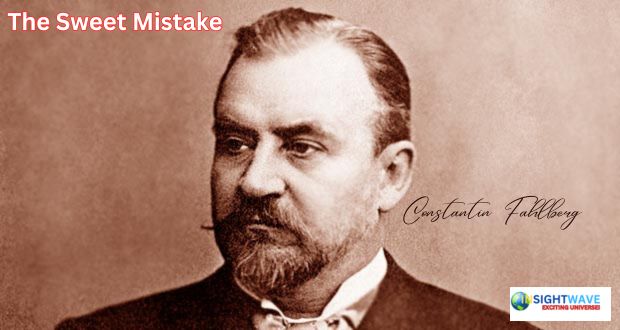In today’s world, artificial sweeteners are a ubiquitous part of our daily lives. Whether we’re sipping on a diet soda, stirring a packet of sweetener into our morning coffee, or indulging in a sugar-free dessert, these calorie-free alternatives to sugar have become a staple in modern diets. Among the pioneers of artificial sweeteners, saccharin stands out as one of the earliest and most enduring success stories. But the history of saccharin is a tale of serendipity, scientific innovation, controversy, and a few surprising twists along the way.
Page Contents
The Accidental Discovery
The story of saccharin’s discovery begins in the late 19th century with Constantin Fahlberg, a Russian chemist of German descent. In 1878, Fahlberg was working in the laboratory of renowned chemist Ira Remsen at Johns Hopkins University. One day, Fahlberg was conducting experiments involving coal tar derivatives when he made a peculiar discovery. After a long day in the lab, he returned home and noticed an unexpectedly sweet taste on his hands and arms.
Curiosity piqued, Fahlberg set out to identify the source of this mysterious sweetness. He realized that the sensation originated from a chemical compound on his skin, which he later identified as benzoic sulfimide. Fahlberg had accidentally discovered saccharin, a compound that was over 300 times sweeter than sucrose (table sugar).
Read Also : The Mysteries of the Bermuda Triangle: Unravelling the Enigma
The Rise of Saccharin
Fahlberg and Remsen began to investigate saccharin’s properties, and they soon recognized its potential as a sugar substitute. The chemists patented their discovery in 1884, and saccharin quickly found its way into the food industry. It became a popular choice for diabetics and individuals looking to reduce their calorie intake.
Saccharin’s success was not limited to the United States; it gained international recognition as a revolutionary sugar alternative. World War I further bolstered its popularity, as sugar shortages led to increased demand for saccharin-sweetened products.
Controversy and Regulation
However, saccharin’s rise to fame was not without its controversies. In the early 20th century, concerns arose regarding the safety of saccharin consumption. In 1907, the U.S. Department of Agriculture conducted studies on saccharin and reported that it caused bladder tumors in laboratory rats. This revelation sparked a nationwide debate on the safety of artificial sweeteners.
Despite the controversy, saccharin remained on the market. However, it was required to carry warning labels for several decades. In 1977, the U.S. Food and Drug Administration (FDA) proposed banning saccharin due to its potential carcinogenic properties. This decision sparked outrage among saccharin users and the food industry, leading to public protests and petitions.
In response to the outcry, Congress passed the Saccharin Study and Labeling Act in 1977, which suspended the FDA’s ban and allowed continued sale and consumption of saccharin. However, products containing saccharin still had to carry warning labels until 2000 when further research
showed that the compound might not pose the same cancer risk to humans as it did to rats. The warning labels were subsequently removed.
The Modern Landscape of Artificial Sweeteners
While saccharin was the first artificial sweetener, it paved the way for the development of a diverse range of sugar substitutes. Some of the most notable alternatives include aspartame (found in products like Diet Coke), sucralose (used in Splenda), and steviol glycosides (derived from the stevia plant).
These newer sweeteners have their unique properties and advantages. Aspartame, for example, is heat-sensitive, making it unsuitable for cooking and baking but ideal for cold beverages. Sucralose, on the other hand, is heat-stable and can be used in a variety of culinary applications. Steviol glycosides are derived from a natural source, the stevia plant, and have gained popularity among those seeking more natural alternatives.
Read Also : Unveiling the Mystery: Atlantis – History, Theories, and Enduring Legends
The Quest for Healthier Alternatives
The popularity of artificial sweeteners has continued to rise in recent years, driven by concerns about sugar’s role in obesity, diabetes, and other health issues. While artificial sweeteners offer a calorie-free alternative to sugar, their long-term health effects remain a subject of debate.
Some studies have suggested that artificial sweeteners may disrupt metabolic processes, alter gut microbiota, and increase cravings for sweet foods, potentially contributing to weight gain and metabolic dysfunction. Additionally, questions about their safety and potential adverse effects persist.
In response to these concerns, food scientists and researchers are exploring new, innovative sweeteners that can mimic the taste and functionality of sugar without the drawbacks. These emerging alternatives include allulose, a rare sugar with a structure similar to fructose but without the calories, and monk fruit extract, which is derived from a Chinese fruit and is up to 250 times sweeter than sucrose.
The Future of Sweeteners
The history of saccharin and artificial sweeteners is a story of scientific discovery, controversy, and adaptation. As we move forward, the quest for healthier and more natural sugar alternatives continues. While artificial sweeteners have their place in the modern diet, they are not a panacea, and their consumption should be moderated.
In the ever-evolving landscape of food science, researchers will continue to develop new sweeteners that balance taste, functionality, and health considerations. As consumers become increasingly health-conscious, the demand for innovative sweetening solutions will only grow.
The sweet mistake that led to saccharin’s discovery has left an indelible mark on the way we perceive and consume sweetness. From Fahlberg’s accidental encounter in a laboratory to the vast array of sweeteners available today, the history of artificial sweeteners is a testament to human ingenuity and our unending pursuit of more healthful and satisfying culinary experiences. As we look to the future, it’s clear that the world of sweeteners will continue to evolve, and new discoveries may be just around the corner.


